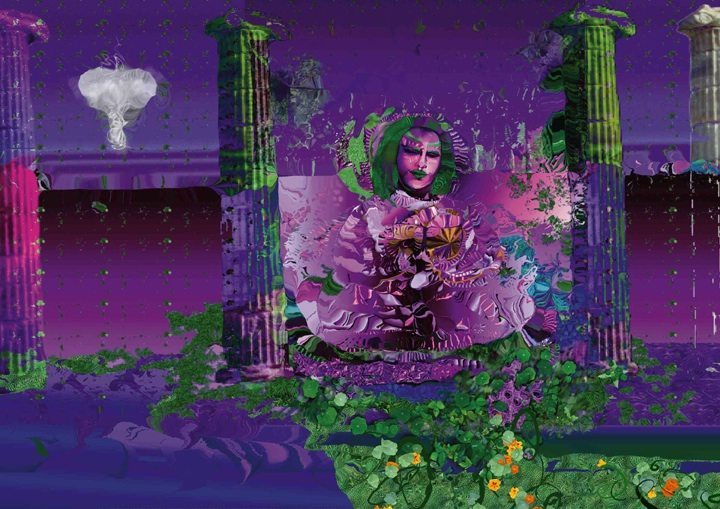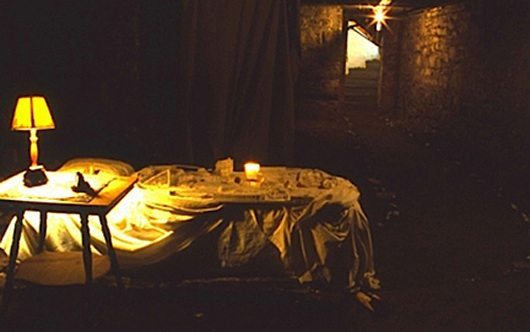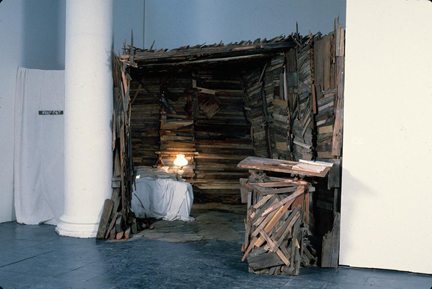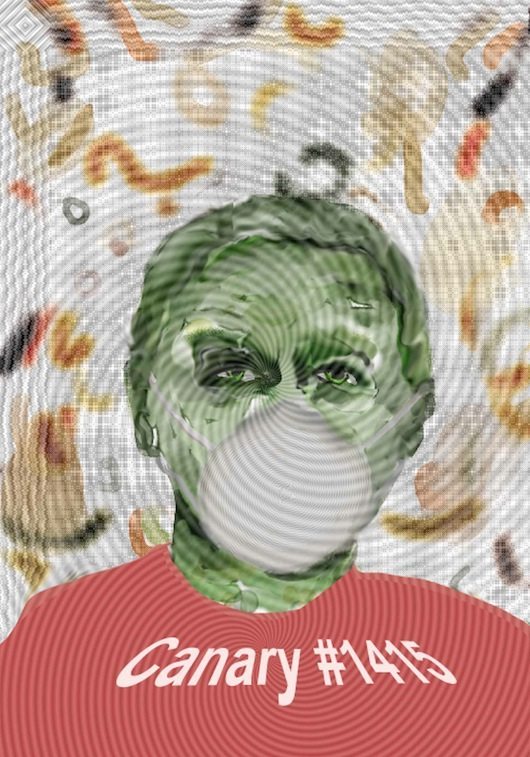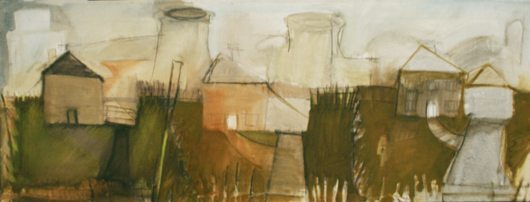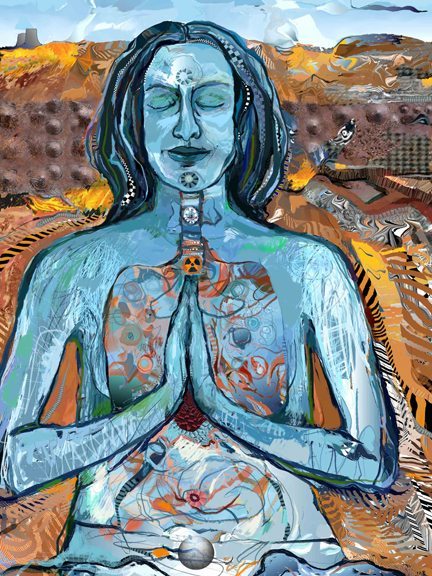Title: NUKED NOTES: THE JOURNEY OF A FREE RADICAL (In Process)
PROLOGUE
SHOPPING IN MY LOCAL CO-OP MARKET, contemplating the purchase of some wild salmon, I ask the friendly counterman if he knows the fish’s origin.
‘Alaska,’ he replies.
‘Are there tests being done on the fish?’ I continue.
‘For what?’ he asks innocently.
‘To see if it’s radioactive,’ I reply.
‘No,’ he shakes his head, looking down uncomfortably, wanting to focus on anything other than the nasty business I let into the room.
And this seems to be the case every time I utter the word, “Fukushima.”
I. WIDE RANGING CONSEQUENCES
* CONTAMINATION OF FISH IN THE Pacific Ocean could have wide-ranging consequences for millions. The Pacific is home to the world’s largest fishery, which is in turn the main source of protein for about one billion people in Asia alone.
In October 2011, a U.S. study – co-authored by oceanographer Ken Buesseler, a senior scientist at the non-profit Woods Hole Oceanographic Institution in Woods Hole, MA., – reported Fukushima caused history’s biggest-ever release of radiation into the ocean – 10 to 100 times more than the 1986 Chernobyl nuclear catastrophe.
‘It’s completely untrue to say this level of radiation is safe or harmless,’ said Gordon Edwards, president of the Canadian Coalition for Nuclear Responsibility. Edwards, who is also a math professor at Vanier College, said Fukushima has highlighted how lackadaisical Canadian authorities are about radiation risks – the result, he says, of the influence of Canada’s powerful nuclear industry.
‘The reassurances have been completely irresponsible. To say there are no health concerns flies in the face of all scientific evidence,’ said Edwards, who has advised the federal auditor-general’s office and Ontario government on nuclear-power issues. (1)
II. THE TIME WE LIVE IN
WINTER 2012, WE HAD THE BIGGEST SNOWSTORM in decades in Seattle. On Facebook, an anti-nuke activist friend warns me, ‘Don’t let kids eat the snow.’ Next I look at a photo of another friend’s high school age daughter taking a big bite of snow into her mouth. My heart flutters between that moment of pleasure, my friend’s caption: ‘Fresh snow tastes so good,’ and a vision of the health challenges facing the children growing up on the West Coast of the U.S. and Canada, not to mention those millions in Japan who most certainly are affected. Unseen, odorless, these radioactive fleas, non-discriminating hot particles, fly in the jet stream and drift to wherever gravity pulls them. Seeds of cancer broadcast indiscriminately, with few people noticing only one year later.
What a time this is. What a time it has been. If I scream these clichéd thoughts at high volume will they reach the ears that need to hear them? WHAT A TIME THIS IS. My eyes attempt to travel to the coast of Japan, to visit under water creatures: sea anemones, plankton and all manner of fish, I want to witness the genetic mutations, the growing tumors and damaged immune systems, so I can really feel what is going on. Does this help me in my daily life? The jury is still out. (2)
I read my activist friend’s frantic Facebook posts : ‘THE MELTDOWN IS STILL HAPPENING & TONS of GALLONS of RADIOACTIVE WATER ARE POURING INTO THE PACIFIC OCEAN.’ There are pages and pages of links and articles. I wonder how many people see her as Chicken Little, and click away immediately. I wonder whom she reaches with her shrill pitch. I shudder and reluctantly click on a link to the most recent headline, thinking it’s better to know than not. But always, I wonder.
Fukushima continues to melt down. Few have the will or skills to confront this reality.
In the United States, the federal government approves the construction of two new reactors in Georgia, while old reactors that should be closed down continue to operate with shaky supervision. Leaks have temporarily closed one California plant (San Onofre) that sits on the San Andreas fault line, even though the local surfing beach has been tested with radioactive levels as high as the Fukushima forbidden zone. (3)
III. ART BUBBLES TO THE SURFACE
FOR 35 YEARS I’VE WORKED WITH NUCLEAR issues in my art, and now, my bone-deep despair and grief again bubbles towards the surface. Gritty, uncomfortable feelings emerge to become more images, objects and some fragments of text. There is no way of knowing whether the art I create is part of a dirge, a death march for our species and many others, or whether it is part of a huge reframing process done by the collective that might produce a miracle. I’ve been toying with the idea that some of us might collaborate on something that will neutralize the hot particles, transforming this 200,000 year toxicity into compost useful for planetary evolution. On my worst days, this sounds like a bunch of New Age claptrap. Still I keep working at my desk, my studio, my teaching, my dancing, my walking, my yoga, my meditation, my family, my garden, my bathtub soaks, my friendships – all practices that allow me to imagine and ground in something other than ecocide.
IV. RECURRING NUCLEAR NIGHTMARES
NUCLEAR ISSUES HAVE HAUNTED ME FROM A young age. My generation had mandatory nuclear air raid drills imposed in elementary school. One siren signaled enough time to run home from school before bombs fell. Another siren, a syncopated wail, warned no time to run, that the missiles had been launched. In silence, we students walked single file into school hallways, sat down and faced the wall. Some were terrified deep inside but their demeanor’s were reserved.
The Cold War nuclear terror formed peculiar obsessions, with whole families building bomb shelters in their backyards. My parents seemed blasé about these fears, but I regularly examined the household pantry to check if we were prepared for nuclear attack. I carefully surveyed the basement for the best hiding place. I determined that safety demanded our family of five live under the ping-pong table, sustained by boxes of stale crackers and cans of juice. It was not a reassuring picture.
In 6th grade my critical faculties kicked in and started to question the sanity of the Cold War and the frenzy surrounding the nuclear scare. When I read the journalist John Hersey’s Hiroshima, his account of that terrible day and its aftermath, I realized we were finished if bombs began to fly.
V. REFRAMING THE NIGHTMARES
ABOUT A DOZEN YEARS LATER, IN GRADUATE school, I started having nightmares about nuclear war. I was so frightened by my dreams that I didn’t even want to write them down, but I felt impelled to make art about them. I had been working with memories and dreams as source material for my artwork. My first impulse was to build a landscape destroyed by the blast of an atom bomb. As a child I made fantasy landscapes within the sheets and covers on my bed, so I used that memorable form as my launch pad for constructing an imagined nightmare landscape. On a three-foot square board, I built a stark white, three-dimensional world. On this dead and crumbling terrain, a tiny movie screen emerged from the surface, like that of an outdoor drive-in theater. I sited this landscape on a bed, the bed of the last survivor of a nuclear war, and projected slides onto the tiny screen–images of lush green and blue landscapes–the earth before we destroyed it.
Venues for this bed installation changed over the years. In 1978 it lived in the dirt floor basement underneath the Anna Leonowens Gallery at the Nova Scotia College of Art and Design. A few years later, with a post-blast shelter made of scavenged, splintered wood, it transformed a corner of a museum gallery into landscape of warning. I wanted to take my audience into the future, a future that I did not want to happen. Sometimes I imagined the installation living in a museum for extinct planets, with extra-terrestrial docents instructing visitors about the failure of the human species to resolve conflicts in less eco-cidal ways.
VI. THIS IS NOT A TEST : AUDIO INSTALLATION
STILL VISUAL EXPRESSIONS OF MY NIGHTMARES were not enough. I needed to create the dialog that lived in my head. I typed lines of text from conflicted inner voices (one despairing about the future and the other expressing cynicism about the ability to do anything to stop nuclear war). I pinned these sentences to my studio walls. Guest artist Laurie Anderson visited and immediately invited me into the NSCAD sound studio to record my words accompanied by various eerie sound effects on multi-layered audio tracks. With this exciting development of my first five-minute audio loop, the first iteration of the installation THIS IS NOT A TEST came to be.
THIS IS NOT A TEST AUDIO:
http://soundcloud.com/weadartists/this-is-not-a-test
When open to the public, this audio installation provoked something very alive in the audience. Older visitors drew me aside to share their panicked thoughts during the Cuban Missile Crisis. Others, closer to my age, shared how they rationalized their fears. Many hoped to be close to one of countless Ground Zeroes if missiles were launched.
In 1980, the New York Feminist Art Institute invited THIS IS NOT A TEST to be in a survey of feminist art on display at the New York Coliseum. When I dismantled this version, I discovered that people had left messages under the bedding. Notes said, ‘I’ve been alone with my nightmares for too long – thank you for breaking the silence,’ and, ‘You hit the nail on the head. Why isn’t anyone talking about this stuff?’ I was astonished by the gift of these messages. No one had ever left me notes tucked into a painting.
That same year, when Ronald Reagan became President, many working against nuclear war became both discouraged and more determined.
Lucy R. Lippard selected my work for the exhibition, ISSUE: Social Strategies by Women Artists, at the Institute for Contemporary Art in London, England. Inspired by grim feelings of that time, I wanted to know whether the British public was similarly wary about nuclear war. I created my first audience-participatory audio piece, The Sky is Falling, the Sky is Falling: A Panacea for Pre-Millenium Tension.
THE SKY IS FALLING Audio:
http://soundcloud.com/weadartists/the-sky-is-falling
In the installation, I asked visitors to sign one of two petitions. The first read, ‘We, the undersigned, do hereby request to be among those who survive.’ The second read, ‘We, the undersigned, do hereby request to be among the first to go.’ The results showed that those wanting to survive were few in number. Although I recognized and was grateful to be part of a sizable community of people aware of the dangers of nuclear war, it felt like a cynical crowd. For the latter reason, my despair did not abate.
VII. THIS IS NOT A TEST: INTERACTIVE INSTALLATION
INTUITIVELY I SENSED THERE WAS ANOTHER DIRECTION that this work needed to take – feeding cynicism didn’t cut it anymore. So in 1983 when I was invited by Lynne Gumpert of the New Museum of Contemporary Art in New York City to display THIS IS NOT A TEST (for the exhibition, The End of the World: Artists’ Visions of the Apocalypse), I took time to rework the project.
Meanwhile, attending an artist’s retreat at Blue Mountain Center in the Adirondack Mountains, a book fell off the shelf in the library and literally hit me in the head. It was Joanna Macy’s Despair and Personal Power in the Nuclear Age. I read Macy’s book voraciously and afterwards, wrote to her. Joanna advised that expressing despair and grief about the state of the world was an important step in the process of becoming an empowered activist. She explained psychic numbing and demonstrated how sharing stories and visions were important to break through feelings of helplessness. I became inspired to transform THIS IS NOT A TEST into more than an inert artwork. After taking a Despair and Empowerment workshop with two of Joanna’s students, I knew that I had to bring some aspects of this workshop to the museum audience.
The third installation version added a ‘ballot box’ constructed of wood debris. On its lid, scrawled in marker, was the message: ‘Please write down your own nightmare or dream for the future and place it in the box.’ I scheduled a special event for breaking open the box for a evening many weeks after the exhibit opened to the public. There happened to be a record-making blizzard that evening, yet more than 100 people made their way to the museum in lower Manhattan. We broke open the box to read the collected dreams and nightmares. Sharing despair unified us. We imagined we could shift that energy into an organized form of power. Although some still expressed frustrations about the art world (wanting the bomb to fall on Soho first) most wrote contributions full of angst and powerful declarations of concern for future generations.
Coinciding with the moment that political author Jonathan Schell’s The Fate of the Earth (4), a series of essays that discussed the realities of nuclear winter, reinvigorated the anti-nuclear movement, THIS IS NOT A TEST helped create a profound connection among people who felt their voices had been heard.
The exhibition received a good deal of press, and THIS IS A NOT A TEST attracted much of the attention. Ironically the most negative remark was by a NY Times writer who called audience-participatory work naïve and tacky. I realized then that my work needed to move outside the NY art world where the artist’s role was not so codified.
Over the next eight years THIS IS NOT A TEST continued to be shown: in a YMCA, a private college gallery, three state university galleries, another museum, and an abandoned department store. In each venue, I created ways for visitors to share their stories with each other. Even after the Soviet Union collapsed, and some thought that we needn’t worry about nuclear war anymore, I felt the content of this installation needed to be heard.
For the last exhibition of the work, I drew on the wall in bold letters a quote from Helen Caldicott:
Not one of the 60,000 deployed nuclear weapons has been dismantled since the Berlin Wall came down. There is more danger of a nuclear war today than ever. War is obsolete.
In 1995 a cross-country move forced me to recycle the props of the original installation permanently.
VIII. ENVIRONMENTAL ILLNESS
IN 2001 I WAS DIAGNOSED WITH THYROID CANCER. At first, devastated, I thought my life was over, and that my then-6-year-old would lose his mom much too early. Then I learned my illness was considered a ‘good, curable cancer.’ All I had to manage was to take a thyroxin pill every day for the rest of my life. Not a bad deal, as far as cancers go. Told that this cancer was most often caused by exposure to a radioactive isotope, I began to wonder when and where I might have been exposed.
Could it have been the nuclear testing from the 1950’s and 60’s that sent a hot particle on the winds from Nevada to Massachusetts, Maine or New Jersey? If so, why weren’t there thousands of cases like mine, and why did it emerge in my late forties?
Was it the partial 1979 meltdown at Three Mile Island in Harrisburg PA, when I was living downwind in New York City? My fears then had turned into paintings and collages of ‘Our Town’ landscapes with cooling towers hovering on the horizon. Was I processing more than the images and emotions of that moment?
Was it in the food in a post-Chernobyl trip to Paris, just one year after that meltdown? Aware of the proliferation of nuke plants I bought a bunch of postcards of Impressionist landscapes at the Louvre, drew cooling towers on their horizons, and mailed them to friends in the States to alert them to the proliferation of nuclear plants all over the French landscape.
Or was it the low-level radiation floating by our rented house on the Deerfield River in Western Massachusetts?
In 1995 we moved to the seemingly pristine hill village so I could recover from the effects of an environmental illness caused by Los Angeles smog and the aerial spraying of Malathion. Ironically we were nested in a birth defect and cancer corridor, downriver from the closed Yankee-Rowe Nuclear Power Plant.
I never learned which incident caused my cancer, but the greatest irony was that after a complete thyroidectomy, I had to take a dose of radioactive iodine to kill any errant thyroid cells left floating around. It was a sterling example of capitalism’s unique ability to create technology that both causes and cures cancer, while making profit from both sides of the equation.
In 2003 I began working on NUKED NOTES: Journey of a Free Radical, as a sequel to my earlier one, CANARY NOTES: The Personal Politics of Environmental Illness. Oddly one image in the latter series, done in response to my own healing from exposure to pesticides and smog, included a piece about women with thyroid diseases with an illustration of a nuclear plant. I didn’t realize the prophetic nature of that work until years later when lecturing on my work.
IX. THE PERSISTANCE OF RADIOACTIVITY
NUKED NOTES REMAINS IN PROCESS to this day.
My digital works and paintings include an image of a Bodhisattva blessing the Yucca Mountain site once ridiculously considered an appropriate nuclear waste repository. Another image stands witness to depleted uranium munitions’ rain on the Iraqi desert.
Sadly, a daily harvest of evidence from a nuked world makes the project continually ripe. As I take my thyroid pill every morning without fail, I remind myself to do ‘contact improvisation’ with the ever present and continually unfolding legacy of nuclear fission.
In 2003 we moved to Vashon Island in Washington state’s Puget Sound and within a year we purchased a home on a hill called Paradise Ridge. A few years later, I learned that from 1956-74, Paradise Ridge was a NIKE missile base, and in the early 1960s Hercules ready-to-launch nuclear missiles sat in silos there. (5) It was haunting to learn that this gentle, wooded, equestrian park once housed nuclear weapons.
To exorcise the demented spirit that brought nuclear missiles into existence, I made a series of mixed media works entitled: underGROUND: Artifacts of this Present Moment.
The text in one reads:
Fingertips stained
with blackberries
are carried
by steady feet.
So she walks,
like a ghost dancer
towards some unwanted future,
as another blackberry’s sweet-sourness
explodes on her waiting tongue.
The Hercules Nike missiles were once here
gently positioned in their silos
underground
waiting for a call,
an irresolvable dispute,
to rain death.
Only fleeting attention is given to this history
while only 30 miles away
are many megatons worse
Yes, today, NOW, today
the tridents sleep fitfully.
Another says,
Each night sleeping with missiles,
awakening to a soft, airborne seed
dancing in the wind.
It tickles our noses and we continue.
Yes, we continue. And radioactivity continues to spread. (6)
END NOTES:
(2) http://www.youtube.com/watch?feature=player_embedded&v=ywKv0dj3UuY#!
(3) http://sacredskysacredearth.com/2012/03/13/radiation-leak-at-san-onofre/
(4) Jonathan Schell, The Fate of the Earth, 1982, Standford University Press.
(5) http://www.techbastard.com/missile/nike/seattle-wa.php
(6) http://www.washingtonsblog.com/2012/03/california-slammed-with-fukushima-radiation.html

